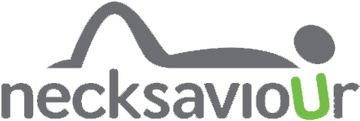How Does the Necksaviour Work

necksaviour can deliver forces up to 25lbs/11kgs which is at the lower end of what is commonly regarded as 'medical' traction for the cervical spine. The precise force it delivers will depend on many factors including the length of the neck, the degree of recline and the surface it is used on.
It's forces are applied to upper trapezius bilaterally and the occipital/nuchal region bilaterally. There is no pressure on the mandible and therefore no pressure transmitted through the TMJ (temporomandibular joint). Used as instructed necksaviour applies a therapeutic stretch to the cervical spine and it’s associated soft tissue in a few degrees of flexion.
Indications
- Headaches
- Neck stiffness
- Muscle spasm/tension
- Disc problems
- Arthritis
- Joint inflammation
- Wry neck
- Sub acute whiplash
- Upper limb referred pain
It is important that patients are advised on the importance of good posture and instructed on how to achieve this and the value of a regular exercise and stretching regime. necksaviour, like all traction devices is subject to certain precautions and containdications.
Precautions
Traction should not be painful and the sensation should be one of minor discomfort and a stretch only. Use of any traction device should be discontinued immediately if the user experiences pain in the neck, back or limbs. This is also the case if there is any experience of nausea, dizziness, double vision, difficulty swallowing, numbness or pins and needles. If this is the case a health care provider should be consulted.
Contraindications
Acute or traumatic injury, spinal instability or fracture, severe rheumatoid arthritis, spinal cord compression, infections, inflammatory diseases, malignancy, vertebrobasilar insufficiency and any other condition which could be worsened by movement (particularly distraction).

